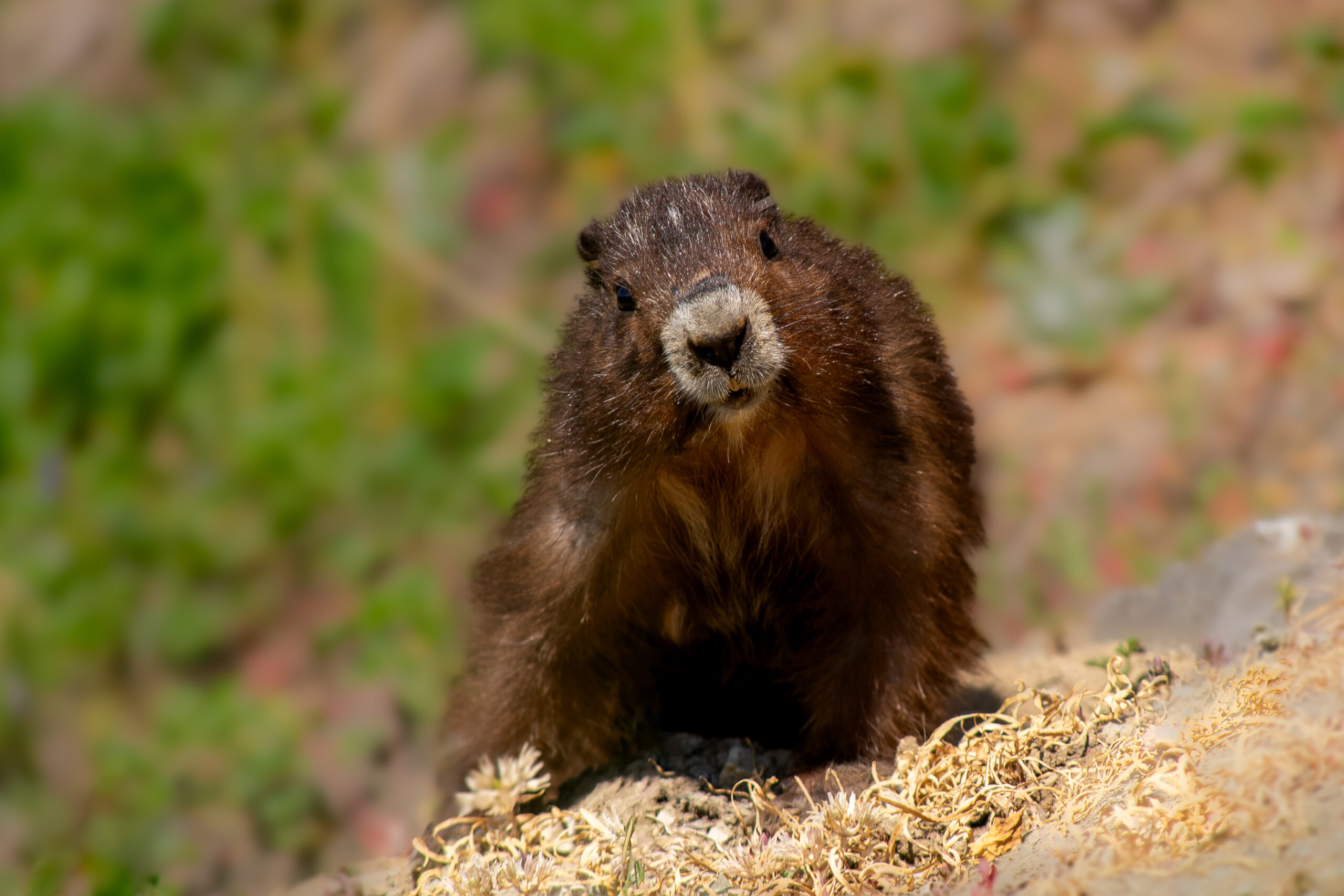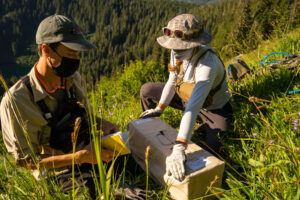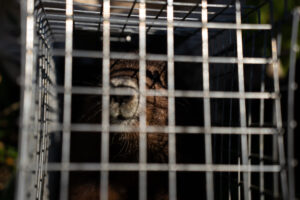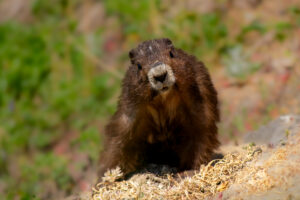The day that a marmot born in the conservation breeding program is released to the wild is the cumulation of years of work and new beginning: both for the marmot and for our work with it. This is story of Chloro’s release day.
Chloro was born at the Tony Barrett Mount Washington Marmot Recovery Centre as part of our conservation breeding program. At one year old, he and three other marmots were selected for release to Haley Lake Ecological Reserve.
The day before release, Chloro is brought in for a full examination by our veterinarian. Receiving a clean bill of health, he is returned for one last night to his enclosure.
Release day begins early in the morning. Chloro is put in a live trap, and then loaded onto a helicopter. After a 30 minute flight, he is unloaded to staff waiting for him in the field. From the drop off site, he is loaded onto a backpack and hiked to his release location. The hike may be the most stressful part of the journey. Being this close to humans – a potential predator – is not something Chloro is used to. He whistles in alarm, as do his three companions.
But it is not long before the final step of the release. His live trap is placed against an existing burrow, filled with familiar straw from his enclosure and some of his favorite foods. The door is opened, and he has the opportunity to escape into the welcoming burrow. The dirt and rocks of a natural burrow will be unfamiliar, but the cool and dark should feel safe to Chloro.
It is amazing how quickly Chloro and his companions adapt to their new home, and curiosity wins out over safety. Within 15 minutes, all four marmots are out of the burrow, and exploring their new surroundings.
2025 UPDATE: Since Chloro was released, he has been somewhat adventurous. He and and one of his release companions, Gracelyn, paired up. By the end of their first summer in the wild, they had moved from their release to another burrow in a nearby meadow. Then at the end of the following year, the pair both moved to another nearby colony.





